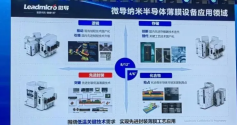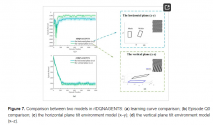Microguide Nano released its self-developed "Advanced Packaging Low-Temperature Thin Film Application Solution" for the first time at the "16th Integrated Circuit Packaging and Testing Industry Chain Innovation and Development Forum (CIPA2024)".
The solution is designed for the special needs of low-temperature processes for 2.5D and 3D advanced packaging technologies in the semiconductor field, and can achieve high uniformity, high quality, and high reliability thin film deposition effects in the low-temperature range of 50~200°C.
The self-developed equipment released by the company includes low-temperature PECVD, PEALD, ALD, etc.:
(1) iTronixLTP series low-temperature PECVD system is suitable for hybrid bonded dielectric layer (ILD), low-k barrier layer and stacked film (BVR);
(2) iTomic PE series PEALD is suitable for high aspect ratio TSV liner, which can form a uniform and dense insulation layer in the through hole with extremely high aspect ratio to ensure the stability of device performance;
(3) iTomic MeT series metal and metal nitride ALD system is suitable for copper barrier layer of high aspect ratio TSV, which can effectively prevent copper diffusion and improve TSV reliability. The company is currently actively promoting the market introduction of the above products to build a first-mover advantage.

The company's product line has basically achieved comprehensive coverage of all categories of pan-semiconductor thin film deposition equipment: the company's existing ITomic series ALD systems, MW batch deposition systems, Itronix CVD systems and other products can achieve a relatively comprehensive coverage of thin film deposition applications in logic chips, memory chips, compound semiconductors, and new displays (silicon-based OLEDs). The company's current products have covered HfO, AlO3, ZrO, TiO, LaO3, ZnO, SiO, TiN, TiAl, TaN, AlN, SiN, SiON, SiCN, amorphous carbon, SiGe and other thin film materials. As the micro-guide product matrix continues to enrich, the company will benefit from the expansion of domestic semiconductor advanced process production. At the same time, by broadening the application scenarios of products, it can effectively reduce the adverse effects of cyclical fluctuations in a single industry on the company.


